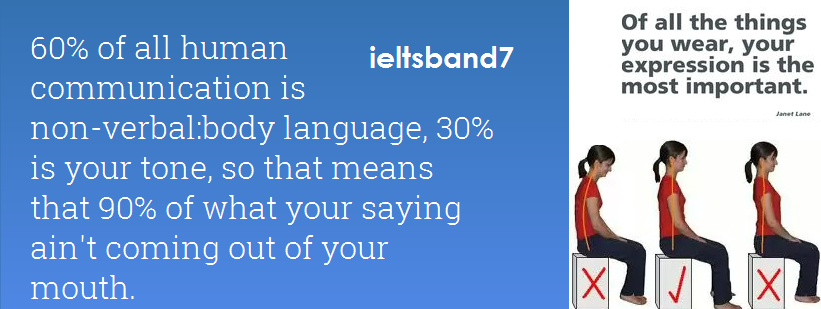Body Language # Speaking Section
Speaking is not about just blurring out some random words, with some great vocabulary words using various grammatical structures. All of this is important but they don’t make speaking. You may go about and speak the best speech ever, but if the audience (in your case the examiner) does not connects with you, there is no point of the entire discussion.
But then how can one connect with the examiner??
- Gesture – Make sure you use your hands. They are not there to be put inside pocket or fiddle with pen or fold across your chest. You need to use them to emphasise a particular point or engage the examiner. You might be very energetic from inside but if you are sitting there fiddling with your pen or looking here and there, you surely do lose marks. Also, when not using your hands for gestures, keep them to the side. It shows that you are at ease.
- Stance – How you sit in front of the invigilator speaks before you even open your mouth. Your stance can tell whether you are angry or sad or confident or scared. So remember, stance speaks. If you are sitting with a balanced stance and slightly bent forward it means you are engaged with the invigilator. On the other hand, if you have a slumped stance and leaning on one side, it says you don’t care. Make sure, you keep notice of how you are sitting.
- Facial expression – The movement of your eyes, mouth and facial muscles build a connection with the examiner. Eye focus is the most important part of this. It helps in connecting with the examiner in no better way. Also, the facial expression matters. It easily conveys your feelings about the topic, whether you know about it or you are faking it or you are nervous, whatever.
Try practicing in front of mirror. The gestures that you use must be large enough to embrace the listener. Sit upright, lean a bit towards the examiner, smile , make an eye contact and speak as if you are speaking from you heart.

